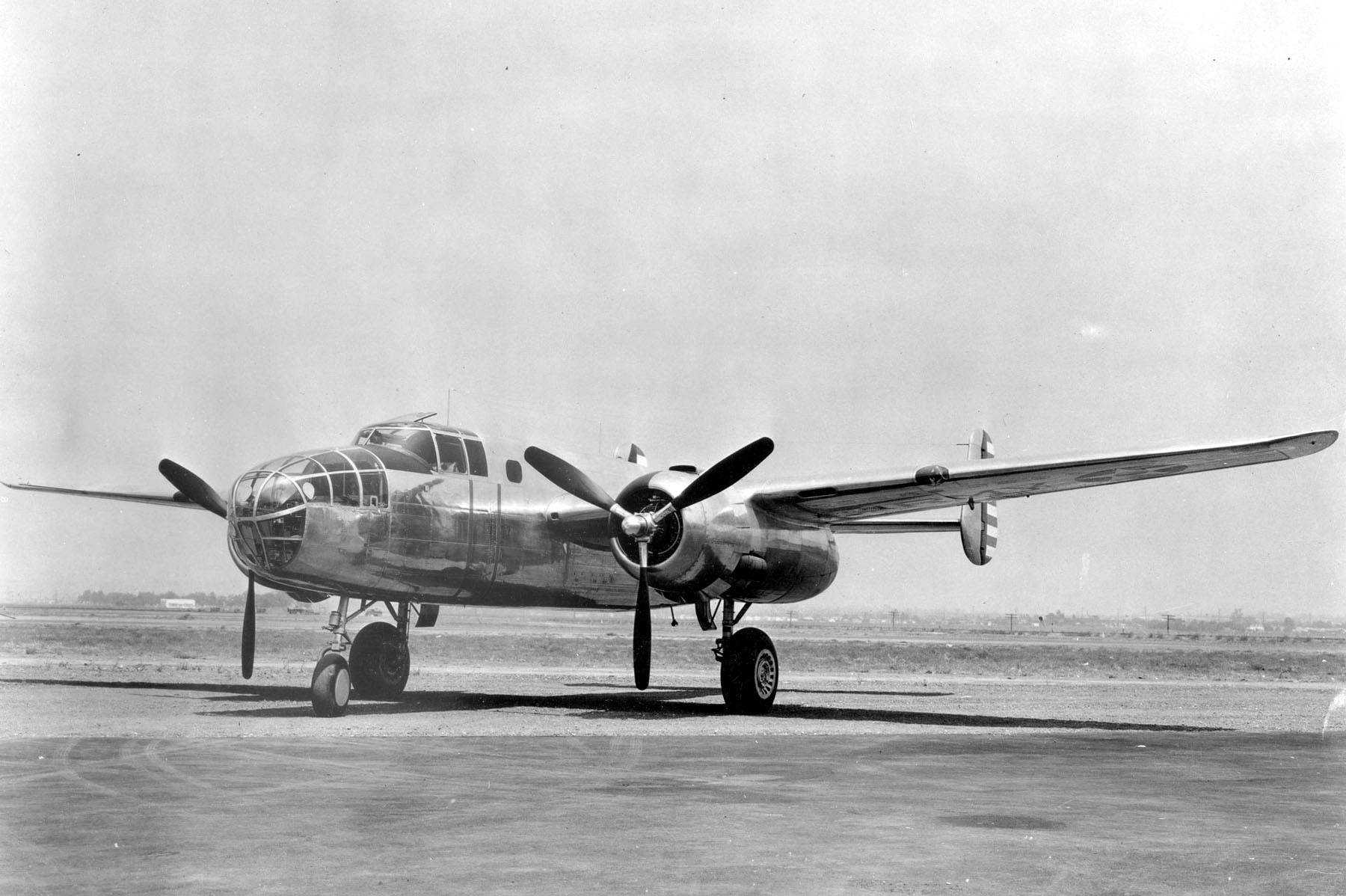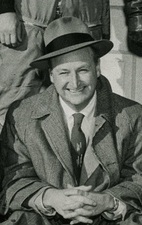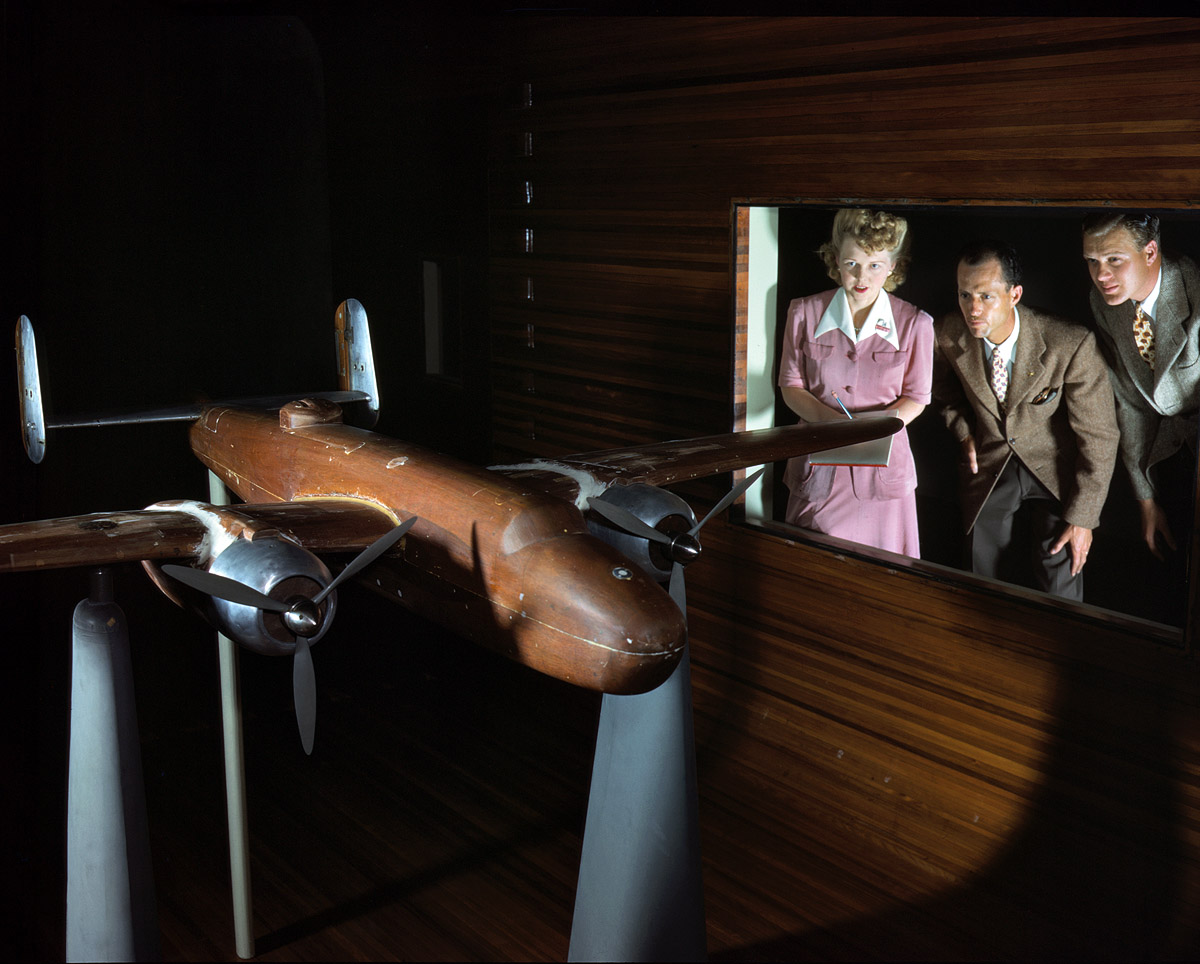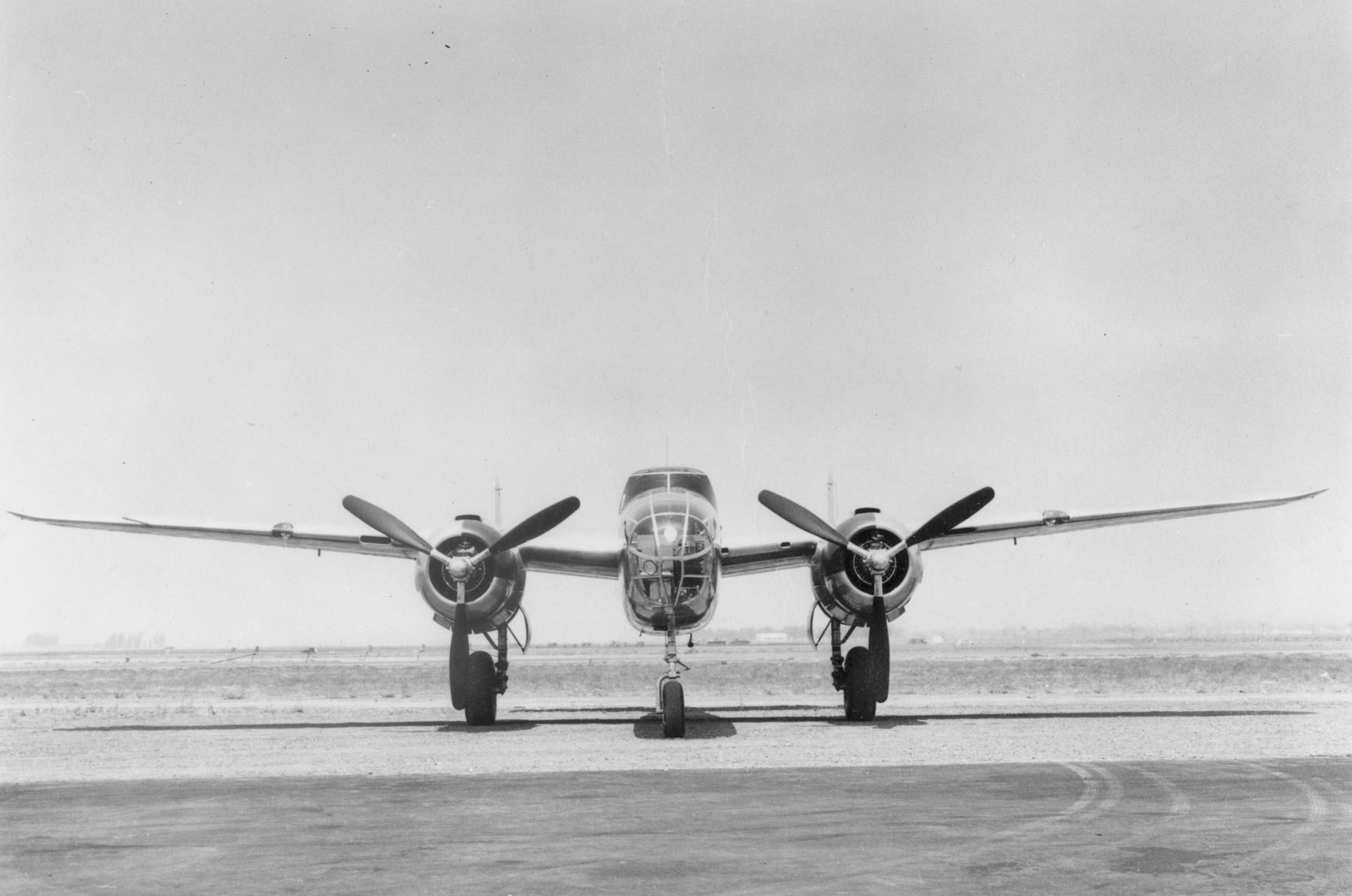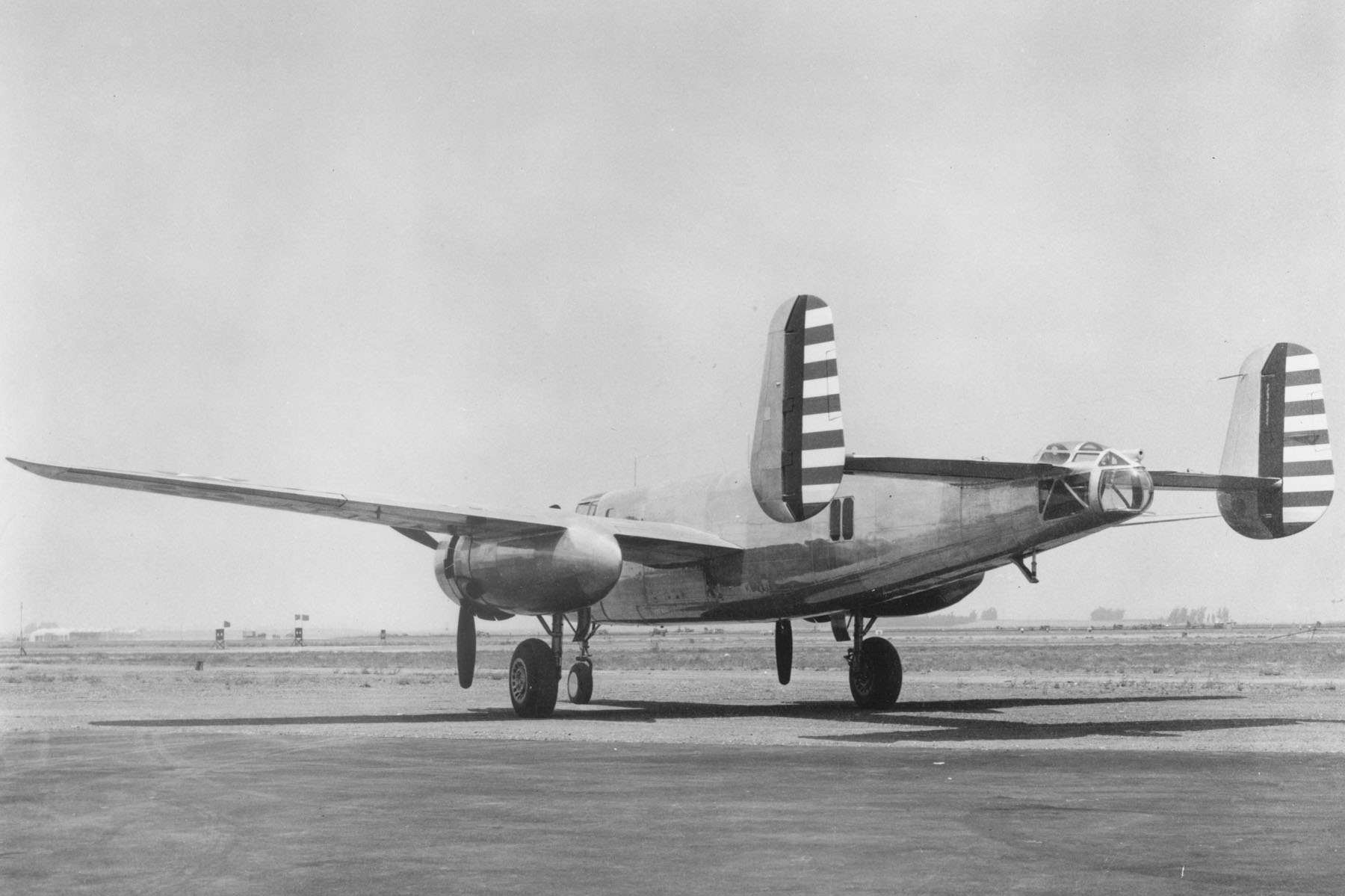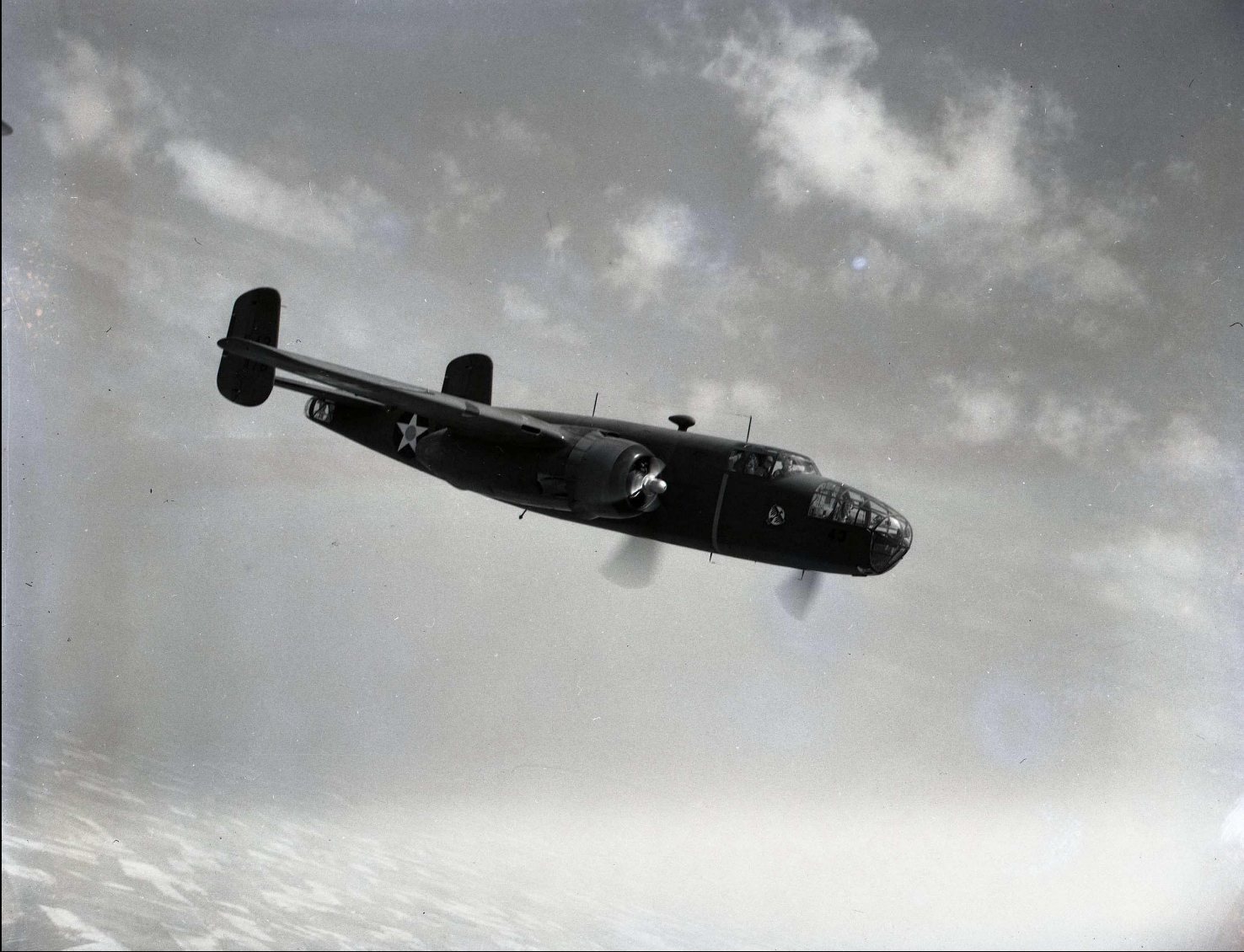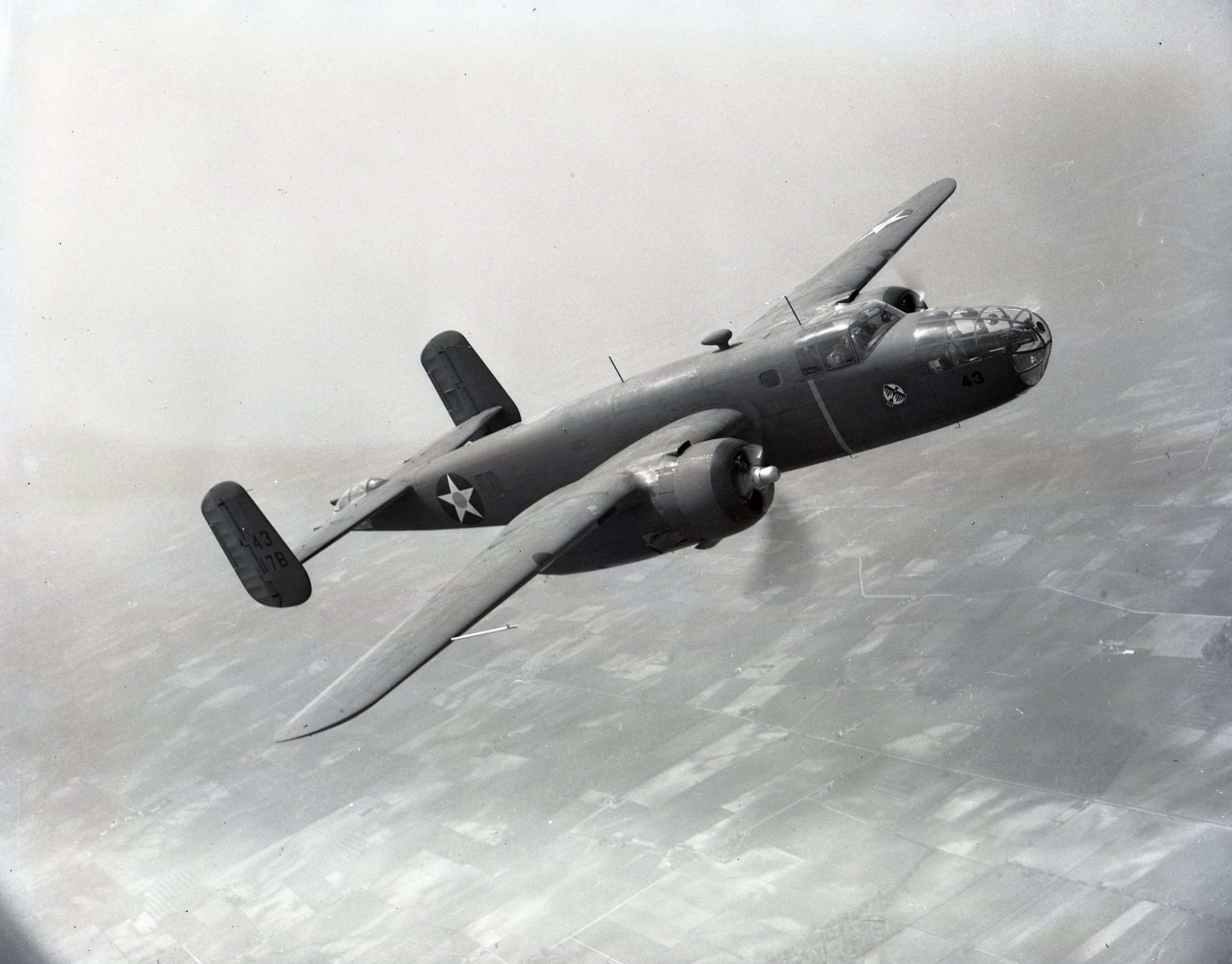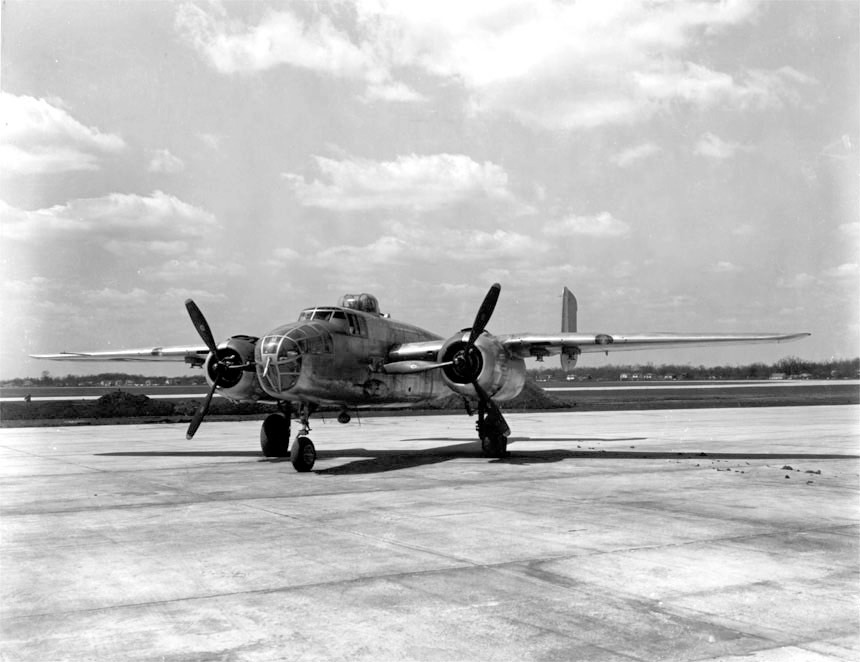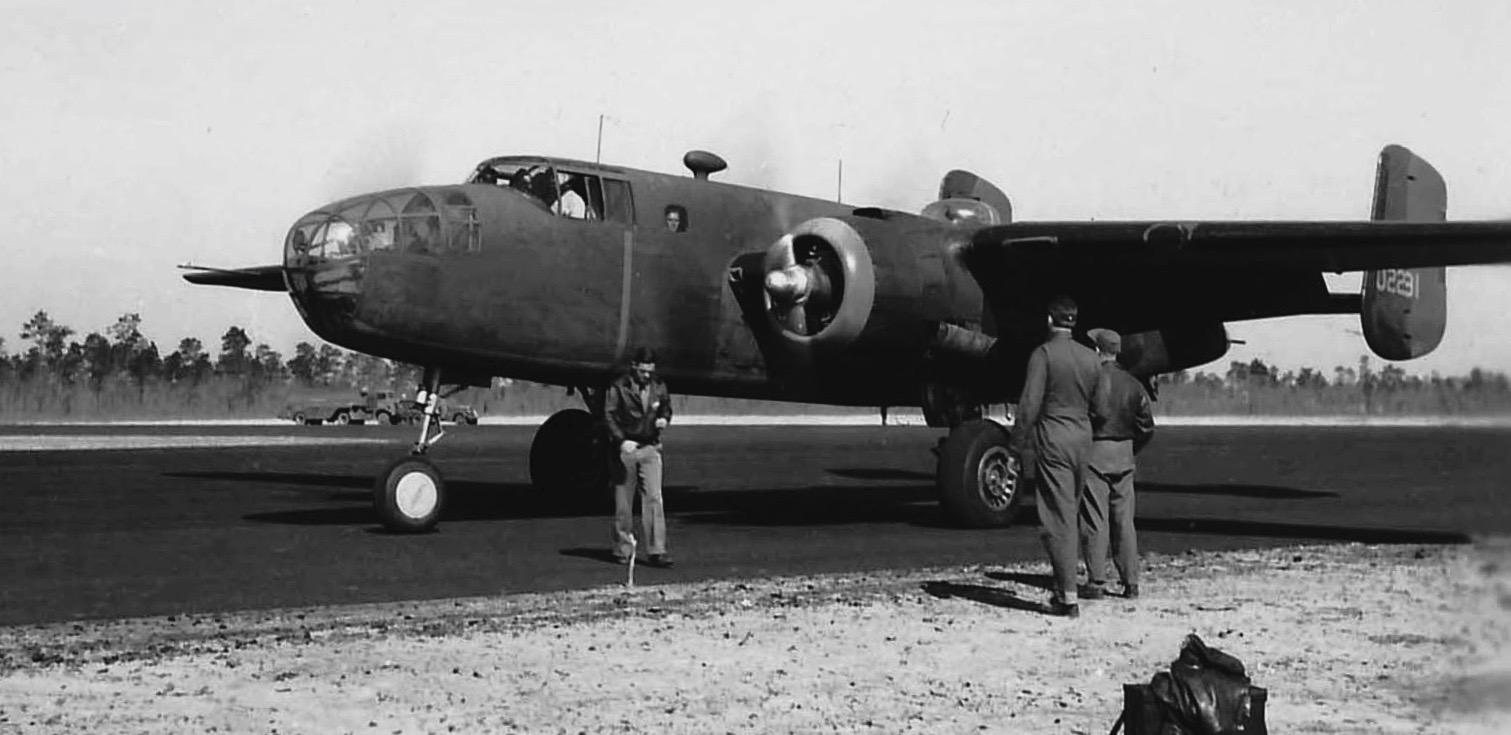
27 March 1942: After three weeks of intensive training at Eglin Field, Florida, twenty-two North American Aviation B-25B Mitchell twin-engine medium bombers of the 34th Bombardment Squadron (Medium), 17th Bombardment Group (Medium), U.S. Army Air Force, under the command of Lieutenant Colonel James Harold Doolittle, completed a two-day, low-level, transcontinental flight, and arrived at the Sacramento Air Depot, McClellan Field, California, for final modifications, repairs and maintenance before an upcoming secret mission: The Halsey-Doolittle Raid.
The B-25 had made its first flight 19 October 1940 with test pilot Vance Breese and engineer Roy Ferren in the cockpit. It was a mid-wing airplane with twin vertical tails and retractable tricycle landing gear. The first 8–10 production airplanes were built with a constant dihedral wing. Testing at Wright Field showed that the airplane had a slight tendency to “Dutch roll” so all B-25s after those were built with a “cranked” wing, using dihedral for the inner wing and anhedral in the wing outboard of the engines. This gave it the bomber’s characteristic “gull wing” appearance. The two vertical stabilizers were also increased in size.
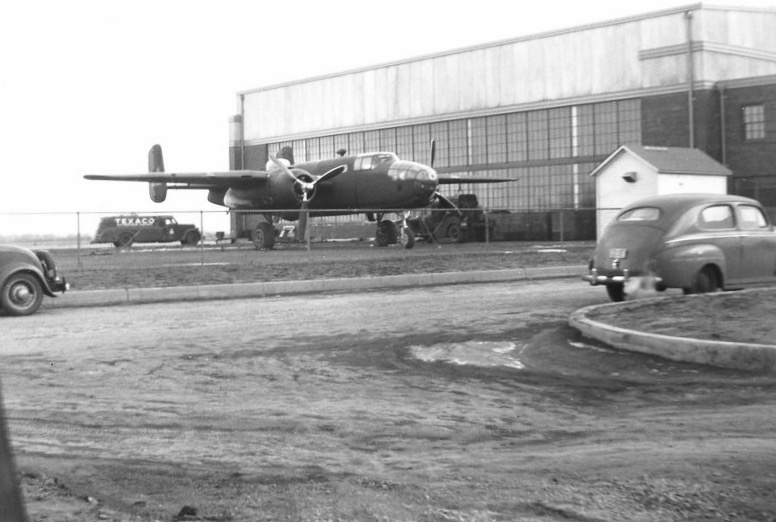
The B-25B Mitchell was operated by a crew of five: two pilots, a navigator, bombardier and radio operator/gunner. It was 53 feet, 0 inch (16.154 meters) long with a wingspan of 67 feet, 7.7 inches (20.617 meters) and overall height of 15 feet, 9 inches (4.801 meters). The The B-25B had an empty weight of 20,000 pounds (9,072 kilograms) and the maximum gross weight was 28,460 pounds (12,909 kilograms).
The B-25B was powered by two air-cooled, supercharged, 2,603.737-cubic-inch-displacement (42.668 liter) Wright Aeronautical Division Cyclone 14 GR2600B665 (R-2600-9) two-row 14-cylinder radial engines with a compression ratio of 6.9:1. The engines had a Normal Power rating of 1,500 horsepower at 2,400 r.p.m., and 1,700 horsepower at 2,600 r.p.m. for takeoff, burning 100-octane gasoline. These engines (also commonly called “Twin Cyclone”) drove three-bladed Hamilton Standard Hydromatic variable-pitch propellers through 16:9 gear reduction. The R-2600-9 was 5 feet, 3.1 inches (1.603 meters) long and 4 feet, 6.26 inches (1.378 meters) in diameter. It weighed 1,980 pounds (898 kilograms).
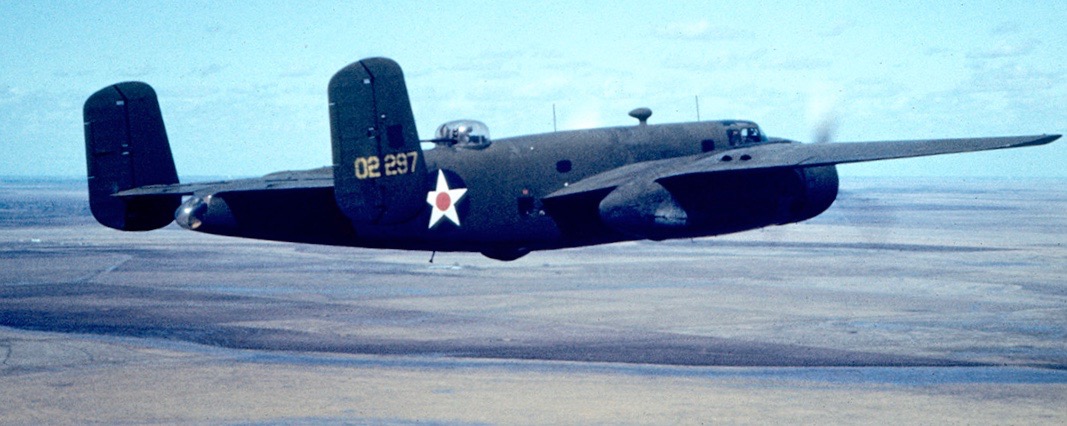
The medium bomber had a maximum speed of 322 miles per hour (518 kilometers per hour) at 15,000 feet (4,572 meters) and a service ceiling of 30,000 feet (9,144 meters).
It could carry a 3,000 pound (1,361 kilograms) bomb load 2,000 miles (3,219 kilometers). Defensive armament consisted of a single Browning M2 .30-caliber machine gun mounted in the nose, two Browning M2 .50-caliber machine guns in a power dorsal turret, and two more .50s in a retractable ventral turret. (The lower turrets were removed from all of the Doolittle B-25s.)
North American Aviation, Inc., built 9,816 B-25s at Inglewood, California, and Kansas City, Kansas. 120 of these were B-25Bs.
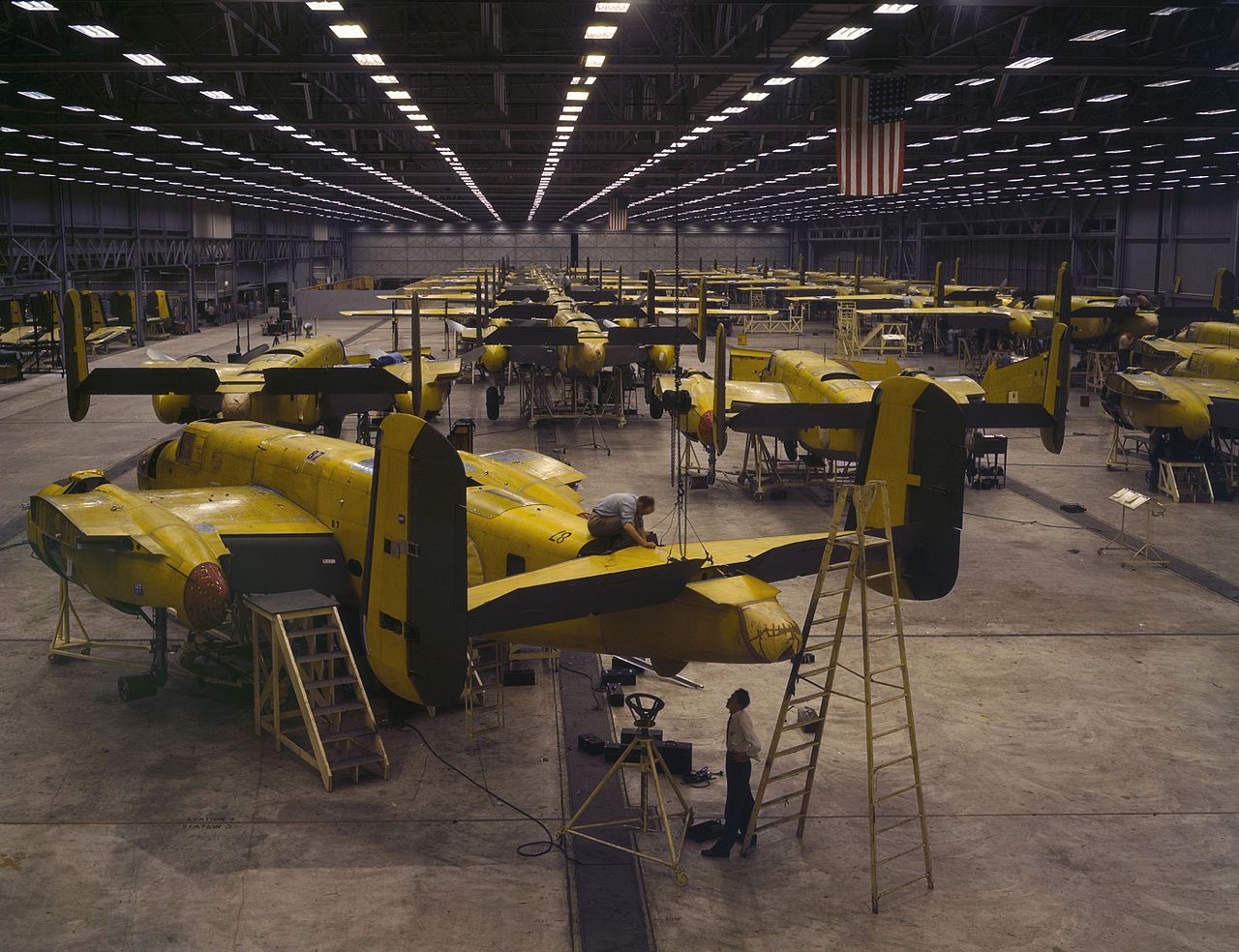
© 2017, Bryan R. Swopes
